Related Research Articles
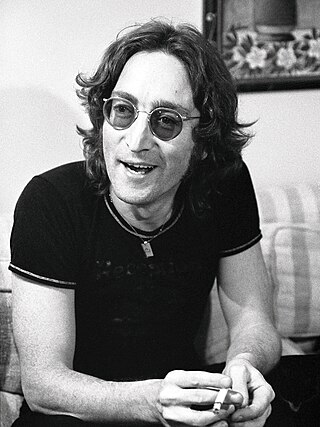
John Winston Ono Lennon was an English singer, songwriter and musician who gained worldwide fame as the founder, co-songwriter, co-lead vocalist and rhythm guitarist of the Beatles. His work included music, writing, drawings and film. His songwriting partnership with Paul McCartney remains the most successful in history.

Yoko Ono is a Japanese multimedia artist, singer, songwriter, and peace activist. Her work also encompasses performance art and filmmaking.
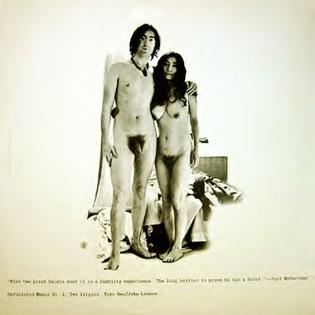
Unfinished Music No. 1: Two Virgins is the first of three experimental albums released by John Lennon and Yoko Ono on Apple Records. It was the result of an all-night session of musical experimentation with Yoko in John's home studio at Kenwood, while his wife, Cynthia Lennon, was on holiday in Greece. Lennon and Ono's 1968 debut recording is known not only for its avant-garde content, but also for its cover, which shows the couple naked. This made the album controversial to both the public and the parent record company EMI, which refused to distribute it. In an attempt to avoid controversy, the LP record was sold in a brown paper bag, and distributed by Track and Tetragrammaton in the United Kingdom and the United States respectively. Two Virgins, while failing to chart in the UK, reached number 124 in the US. The album was followed six months later by Unfinished Music No. 2: Life with the Lions.
The Plastic Ono Band was a rock band formed by John Lennon and Yoko Ono in 1969 for their collaborative and solo projects based on their 1968 Fluxus conceptual art project of the same name.
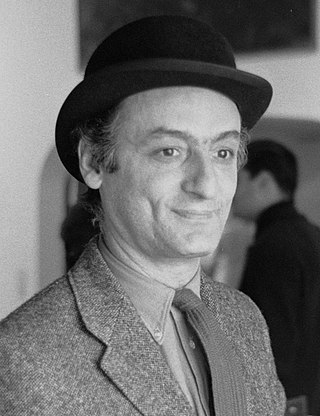
Larry Rivers was an American artist, musician, filmmaker, and occasional actor. Considered by many scholars to be the "Godfather" and "Grandfather" of Pop art, he was one of the first artists to merge non-objective, non-narrative art with narrative and objective abstraction.

"The Ballad of John and Yoko" is a song by the English rock band the Beatles that was released as a non-album single in May 1969. It was written by John Lennon and credited to the Lennon–McCartney partnership, and chronicles the events surrounding the wedding of Lennon and Yoko Ono. The song was the Beatles' 17th UK number-one single and their last for 54 years until "Now and Then" in 2023. In the United States, it was banned by some radio stations due to the lyrics' reference to Christ and crucifixion. The single peaked at number 8 on the US Billboard Hot 100. The song has subsequently appeared on compilation albums such as Hey Jude, 1967–1970, Past Masters, and 1.

Fly is the second album by Yoko Ono, released in 1971. A double album, it was co-produced by Ono and John Lennon. It peaked at No. 199 on the US charts.

"Everybody's Got Something to Hide Except Me and My Monkey" is a song by the English rock band the Beatles from their 1968 double album The Beatles. It was written by John Lennon and credited to Lennon–McCartney. The lyrics contain sayings the Beatles heard from Maharishi Mahesh Yogi, with whom they studied Transcendental Meditation in India in early 1968. In his subsequent comments on the song, Lennon said it addressed his bandmates' initial reaction to his relationship with Yoko Ono. Recorded early in the sessions for the White Album, the track typifies Lennon and the Beatles' return to a rock sound in 1968 after their psychedelic period.
Kenwood is a house on the St George's Hill estate, Weybridge, Surrey, England. Originally called the Brown House, it was designed by architect T. A. Allen, and built in 1913 by Love & Sons, a local building firm. The estate was constructed around the Weybridge Golf Club, which was designed in 1912 by Harry Colt.
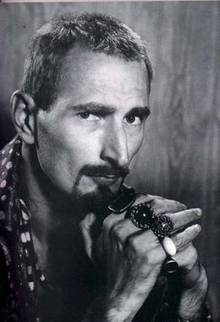
Jack Smith was an American filmmaker, actor, and pioneer of underground cinema. He is generally acclaimed as a founding father of American performance art, and has been critically recognized as a master photographer.

The Dirty Mac was John Lennon's temporary supergroup organised in December 1968 that featured Eric Clapton, Keith Richards, Mitch Mitchell and himself. The band assembled for a one-off performance on the Rolling Stones' TV special titled The Rolling Stones Rock and Roll Circus. The Dirty Mac played Lennon's Beatles composition "Yer Blues" and "Whole Lotta Yoko", an extended blues improvisation in which they were joined by Lennon's then-girlfriend Yoko Ono and violinist Ivry Gitlis. The TV special, which included appearances by the Rolling Stones, the Who and Jethro Tull, among others, did not air as originally planned and was not released officially until October 1996.
Taylor Mead was an American writer, actor and performer. Mead appeared in several of Andy Warhol's underground films filmed at Warhol's Factory, including Tarzan and Jane Regained... Sort of (1963) and Taylor Mead's Ass (1964).

"Mrs. Lennon" is Yoko Ono's first single from her second studio album Fly, released in 1971. It was written and performed by Ono, and produced by Ono and her husband John Lennon. It includes the B-side "Midsummer New York". "Mrs. Lennon" was featured in the 1972 film Imagine.
"We're All Water" is a song written by Yoko Ono that was first released on the 1972 John Lennon and Yoko Ono Plastic Ono Band album Some Time in New York City. It was the last song on the first record of the album, and the last song on the album that was recorded in the studio.
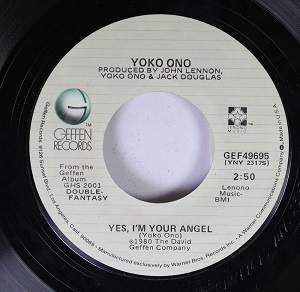
"Yes, I'm Your Angel", also known as "I'm Your Angel", is a song written by Yoko Ono that was first released on Ono's and John Lennon's 1980 album Double Fantasy. It was later released as the b-side of Lennon's single "Watching the Wheels." The initial release of Double Fantasy used the title "I'm Your Angel" but later releases as well as the single used the title "Yes, I'm Your Angel."

"Touch Me" is a song written by Yoko Ono that was first released on her 1970 album Yoko Ono/Plastic Ono Band. An edited version was later released in the U.S. as the b-side to John Lennon's single "Power to the People."

"Who Has Seen the Wind?" is a song written by Yoko Ono that first appeared as the B-side of John Lennon's single "Instant Karma!" It was later issued as a bonus track on a compact disc version of the Wedding Album.
Self-Portrait was a 1969 film made by the artist Yoko Ono. Premiering at the Institute of Contemporary Arts in London in 1969, the 42 minute film consisted of a single shot of her husband John Lennon's semi-erect penis.
Apotheosis is a 1970 film directed by John Lennon and Yoko Ono.
Jonathan Cott is an American author, journalist, and editor. Much of his work focuses on music, embracing both classical and rock. He has been a contributing editor at Rolling Stone since the magazine's founding, and has written for The New York Times, The New Yorker, and other publications.
References
- ↑ Keith Badman (28 October 2009). The Beatles Diary Volume 2: After The Break-Up 1970-2001. Omnibus Press. p. 49. ISBN 978-0-85712-001-4.
- 1 2 3 4 5 Scott MacDonald (26 April 1995). Screen Writings: Texts and Scripts from Independent Films. University of California Press. p. 16. ISBN 978-0-520-08025-6.
- ↑ Larry Kane (17 August 2007). Lennon Revealed . Running Press. p. 129. ISBN 978-0-7624-3404-6.
- 1 2 3 Jonathan Cott (16 July 2013). Days That I'll Remember: Spending Time With John Lennon & Yoko Ono. Omnibus Press. p. 74. ISBN 978-1-78323-048-8.
- 1 2 Jacqueline Edmondson (2010). John Lennon: A Biography. ABC-CLIO. p. 138. ISBN 978-0-313-37938-3.